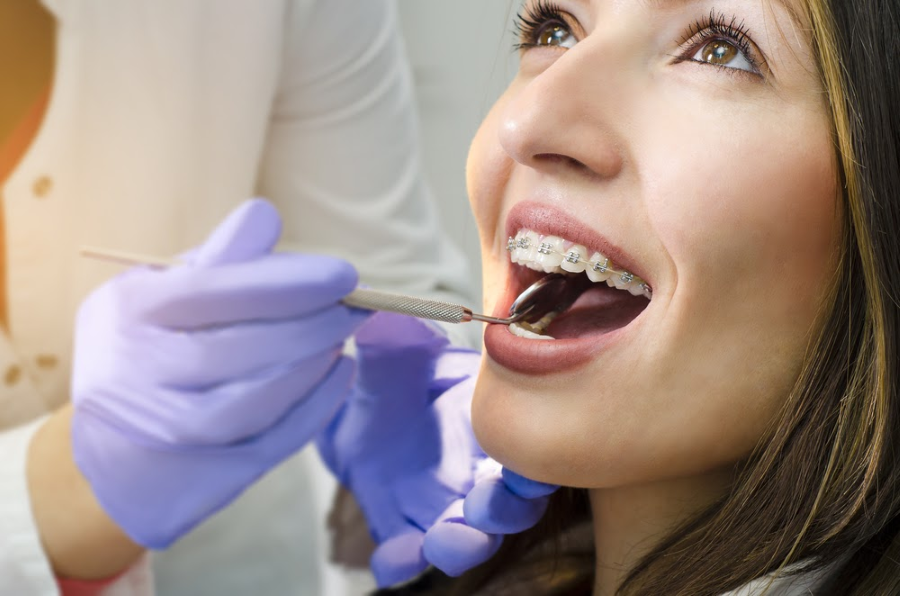Legacy Orthodontics Fundamentals Explained
An orthodontist is a dental expert trained to identify, prevent, and treat teeth and jaw abnormalities. Orthodontists function with people of all ages, from kids to adults.
Malocclusion, or misaligned teeth, can bring about oral issues, including dental cavity, gum condition, and challenging or excruciating eating. However not everyone is birthed with straight teeth. If you have a poor bite or huge spaces in between your teeth, you may wish to consult a dental professional focusing on orthodontic treatment.
Legacy Orthodontics - An Overview
( Image Credit Report: DigitalVision/Getty Images) Orthodontists make use of taken care of and detachable oral devices, like braces, retainers, and bands, to alter the setting of teeth in your mouth. Orthodontic therapy is for dental problems, including: Misaligned teethBite issues, like an overbite or an underbiteCrowded teeth or teeth that are as well much apartJaw misalignmentThe objective of orthodontic treatment is to boost your bite.
A healthy and balanced bite guarantees you can consume, eat, and talk effectively. While you could consider orthodontists as mostly for kids or young adults who need braces, they can remedy dental issues at any kind of age. Orthodontists attend university, oral college, and orthodontic college. After graduation, they invest 2 or 3 years in an orthodontic residency program.
, but not all dental professionals are orthodontists. They concentrate on two areas: How to effectively and safely move teeth Just how to correctly lead growth in the teeth, jaw, and faceOnce an orthodontist has completed training, they have the option to become board accredited.
Unknown Facts About Legacy Orthodontics
Imbalance, or malocclusion, is the most usual reason people see an orthodontist. It is hereditary and is the outcome of dimension distinctions between the upper and lower jaw or in between the jaw and teeth. Malocclusion brings about tooth congestion, an irregular jaw, or uneven bite patterns. Malocclusion is normally treated with: Your orthodontist connects metal, ceramic, or plastic square bonds to your teeth.
Some people need a headwear to aid relocate teeth into line with stress from outside the mouth. A retainer is a custom device that maintains your teeth in place.
They're usually used on kids. They can develop extra area in the mouth without having to pull teeth. If you have a severe underbite or overbite, you may require orthognathic surgical procedure (likewise called orthodontic surgical treatment) to lengthen or shorten your jaw. Orthodontists use cables, surgical screws, or plates to sustain your jaw bone.
You may require to see an orthodontist if you have: Crowding or otherwise adequate area for every one of your teethOverbite, when your upper teeth come your bottom teethUnderbite, when your bottom teeth are also much forwardSpacing or concerns with gapsCrossbite, which is when your upper teeth fit behind your bottom teeth when your mouth is closedOpen bite or a vertical space between your front base and top teethMisplaced midline, when the center of your base and upper teeth do not align Correcting an oral malocclusion can: Make attacking, eating, and speaking easierImprove the proportion of our face and your general appearanceEase discomfort from temporomandibular joint problemsSeparate your teeth and make them simpler to cleanse, helping prevent dental cavity or tooth cavities It's frequently a dentist who first notices misaligned teeth throughout a regular exam.
The Best Guide To Legacy Orthodontics

Throughout your very first orthodontic consultation, you'll likely have: An oral examPhotos go to my site taken of your face and smileDental X-raysPanoramic (360 level) X-rays of your face and headImpressions to produce molds of your teethThese tests will assist your orthodontist know exactly how to wage your treatment. invisalign. An orthodontist is a dental expert who's had training to treat your teeth and jaw
An orthodontist is focused on your bite, so something like a chipped tooth would be taken care of by a dental professional. Orthodontists are concentrated on your bite, or the means your teeth fit with each other, and the straightness of your teeth.
Ever wondered exactly how celebrities constantly appear to have perfectly aligned teeth? Orthodontists are dental professionals who concentrate on correcting abnormalities in the teeth and jaws.
Excitement About Legacy Orthodontics

, orthodontists have a varied toolkit at their disposal. These reliable braces utilize a system of brackets adhered to the teeth and linked by cables.
Clear aligners, like Invisalign, are a prominent option for clients seeking an extra very discreet therapy option. These detachable trays are customized to considerably change the teeth's placement. Headgear might be utilized in combination with braces or aligners to use additional targeted pressures, especially for correcting jaw discrepancies. In instances of slim jaws, palatal expanders can be utilized to produce room for correct tooth alignment.
Comments on “The Main Principles Of Legacy Orthodontics”